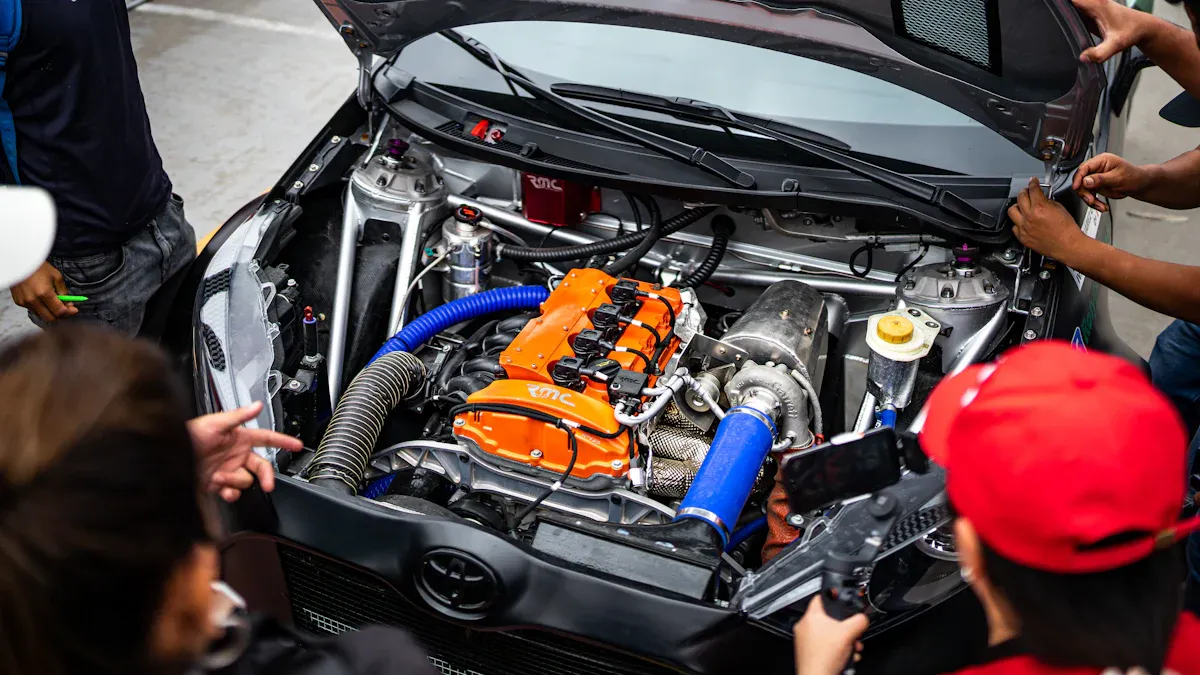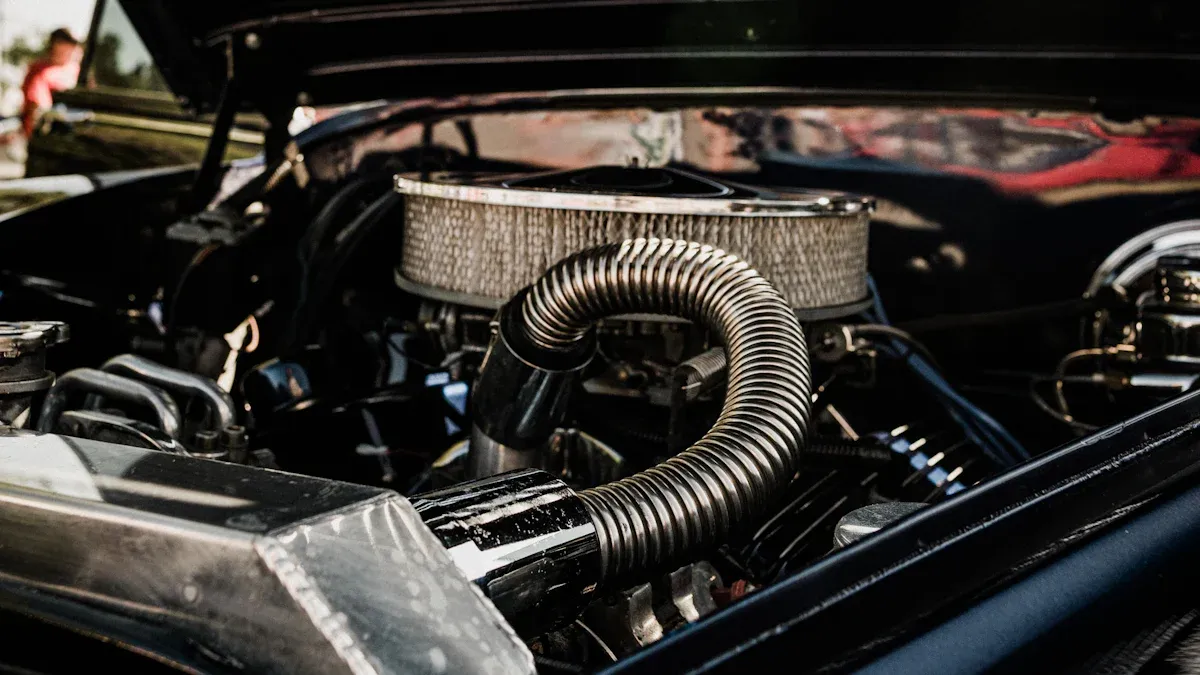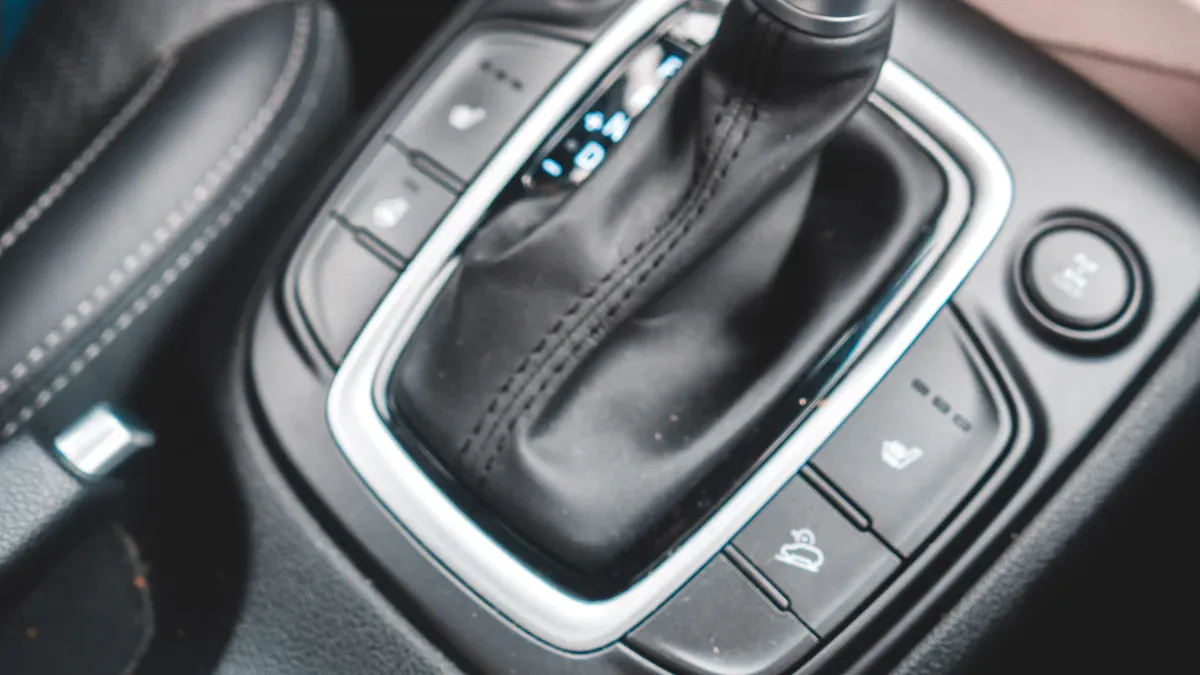
A failing clutch slave cylinder disrupts your vehicle’s clutch system. You may notice the clutch pedal feels soft or unresponsive. This issue makes gear shifting harder and compromises safety. Ignoring the problem can lead to severe damage, including complete clutch failure or harm to the transmission. Addressing it promptly ensures smoother driving and prevents costly repairs.
Key Takeaways
- A bad clutch slave cylinder can make the pedal feel weak. Fixing it early keeps your car running smoothly.
- Watch for fluid leaks or trouble changing gears. These are signs of a problem that needs quick fixing.
- Checking and keeping hydraulic fluid clean can stop clutch problems. Always check fluid levels to avoid expensive repairs.
Symptoms of a Failing Clutch Slave Cylinder

Spongy or Loose Clutch Pedal
A spongy or loose clutch pedal is one of the first signs of a failing clutch slave cylinder. When you press the pedal, it may feel soft or lack resistance. This happens because the hydraulic pressure in the system drops due to a malfunctioning slave cylinder. Without proper pressure, the clutch cannot engage or disengage effectively. You might notice this issue gradually worsening over time.
Hydraulic Fluid Leaks
Leaking hydraulic fluid is another common symptom. The clutch slave cylinder relies on hydraulic fluid to function. If the cylinder develops cracks or seals wear out, fluid can escape. You may spot puddles of fluid under your car, especially near the transmission area. Low fluid levels can also lead to air entering the system, which further reduces clutch performance.
Tip: Check your vehicle’s hydraulic fluid reservoir regularly. Low fluid levels often indicate a leak in the system.
Difficulty Shifting Gears
A bad clutch slave cylinder can make shifting gears a challenge. You might experience grinding noises or resistance when trying to change gears. This happens because the clutch cannot fully disengage, leaving the transmission and engine partially connected. Over time, this issue can damage the transmission.
Clutch Pedal Sticking or Sinking to the Floor
If your clutch pedal sticks or sinks to the floor, the clutch slave cylinder could be the culprit. This occurs when the cylinder fails to maintain hydraulic pressure. In some cases, the pedal may not return to its original position after being pressed. Driving with this issue can be dangerous, as it affects your ability to control the vehicle.
Causes of Clutch Slave Cylinder Failure
Wear and Tear Over Time
The clutch slave cylinder, like many car components, wears out with use. Over time, seals inside the cylinder can degrade, causing it to lose its ability to hold hydraulic pressure. This is especially common in older vehicles or those with high mileage. You might notice the clutch pedal becoming less responsive as the cylinder deteriorates. Regular maintenance can help you catch this issue early and avoid more significant problems.
Contaminated or Low Hydraulic Fluid
Hydraulic fluid plays a critical role in the clutch system. When the fluid becomes contaminated with dirt or debris, it can damage the internal parts of the clutch slave cylinder. Low fluid levels also create problems by allowing air to enter the system, which reduces hydraulic pressure. You should check the fluid reservoir regularly to ensure it’s clean and at the correct level. Using the wrong type of fluid can also lead to premature failure, so always follow your vehicle manufacturer’s recommendations.
Note: Contaminated fluid often appears dark or cloudy. If you see this, it’s time to replace it.
Overuse or Excessive Strain on the Clutch System
Frequent stop-and-go driving or improper clutch use can strain the clutch system. Over time, this extra stress can cause the clutch slave cylinder to fail. Riding the clutch pedal or using it excessively in heavy traffic are common habits that contribute to this issue. To extend the life of your clutch system, you should avoid unnecessary strain and practice proper driving techniques.
Consequences of a Bad Clutch Slave Cylinder
Reduced Drivability and Performance
A failing clutch slave cylinder can significantly reduce your vehicle’s drivability. You may notice the clutch pedal feels inconsistent, making it harder to control. This issue often leads to jerky starts or stalls, especially in stop-and-go traffic. The reduced hydraulic pressure prevents the clutch from engaging or disengaging smoothly. As a result, your vehicle’s performance suffers, and driving becomes less enjoyable. Addressing this problem early can help restore your car’s smooth operation.
Risk of Transmission Damage
When the clutch slave cylinder malfunctions, it can cause incomplete clutch disengagement. This means the engine and transmission remain partially connected when you try to shift gears. Over time, this puts excessive strain on the transmission components. You might hear grinding noises or feel resistance when shifting. Ignoring these signs can lead to costly transmission repairs. Protecting your transmission starts with maintaining a healthy clutch system.
Note: Transmission repairs are often more expensive than replacing a faulty clutch slave cylinder. Acting quickly can save you money.
Potential for Complete Clutch Failure
If left unchecked, a bad clutch slave cylinder can lead to complete clutch failure. When this happens, you lose the ability to change gears entirely. Your vehicle may become undrivable, leaving you stranded. This situation poses safety risks, especially if it occurs while driving. Regular maintenance and prompt repairs can prevent such emergencies and keep your vehicle reliable.
Repair and Replacement of a Clutch Slave Cylinder

Diagnosing the Problem
To fix a faulty clutch slave cylinder, you must first identify the issue. Start by checking for visible signs like hydraulic fluid leaks near the transmission. Press the clutch pedal and observe its behavior. A spongy or sinking pedal often points to a problem. Listen for unusual noises when shifting gears, as grinding sounds may indicate incomplete clutch disengagement. If you suspect an issue, inspect the hydraulic fluid reservoir. Low or dirty fluid can signal a leak or contamination.
Tip: Use a flashlight to examine hard-to-see areas around the clutch system for leaks or damage.
Steps to Replace the Clutch Slave Cylinder
Replacing a clutch slave cylinder involves several steps. First, locate the cylinder, usually near the transmission. Drain the hydraulic fluid to prevent spills. Next, disconnect the hydraulic line and remove the mounting bolts holding the cylinder in place. Install the new cylinder by securing it with bolts and reconnecting the hydraulic line. Finally, refill the hydraulic fluid and bleed the system to remove air bubbles. This ensures proper pressure and smooth clutch operation.
Warning: Always use the correct type of hydraulic fluid recommended by your vehicle’s manufacturer.
Importance of Professional Repair Services
While replacing a clutch slave cylinder might seem straightforward, it requires precision. Incorrect installation can lead to further damage or unsafe driving conditions. Professional mechanics have the tools and expertise to diagnose and repair the issue correctly. They can also inspect related components to ensure the entire clutch system functions properly. Trusting a professional saves time and reduces the risk of costly mistakes.
A failing clutch slave cylinder affects your vehicle’s safety and performance. Ignoring the issue can lead to costly repairs or complete clutch failure. Pay attention to warning signs like fluid leaks or a spongy pedal. Regular maintenance and prompt repairs keep your car reliable and safe.
Reminder: Address clutch issues early to avoid bigger problems.
FAQ
What happens if you ignore a bad clutch slave cylinder?
Ignoring it can lead to complete clutch failure, transmission damage, or unsafe driving conditions. Addressing the issue early prevents costly repairs and safety risks.
How can you check for hydraulic fluid leaks?
Inspect the area near the transmission for puddles or stains. Use a flashlight to spot leaks. Check the fluid reservoir for low levels or contamination.
Can you replace a clutch slave cylinder yourself?
Yes, but it requires precision. Incorrect installation risks further damage. Professional mechanics ensure proper repair and inspect related components for safety.
Post time: Apr-01-2025

